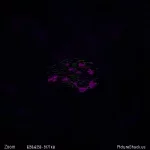Wes said:
We could change the scale of the map.
Well if I recall correctly the old map was drawn showing a region of space 240 x 240 LY in size, in an image of 3000x3000 pixels. The map i'm currently drawing -- if we keep the old distance measurements -- would show a region of space 360 x 360 LY in size, in an image 4500x4500 to 6250x6250 pixels (The .jpeg will be shrunk down in size from 9000x9000 pixels, to the smallest size that can preserve most of the maps detail). I'm leaving the grid-squares unmarked for the time being so that if it is decided that we should chance the distance scale, they can depict an area larger than 10x10 lightyears. IE, they could easily be changed to depict areas 100x100 LY in size; thus increasing the region of space the map depicts to being 3,600 by 3,600 lightyears.
Wes said:
We can add new zones. *We'd want to do something where we're not horizontally scrolling like the current map.
As mentioned above, the map shows an area 2.25 times greater than the old map -- assuming we keep the old distance scale -- though the additional zones still require horizontal scrolling to view them as they're just extensions of the map in all directions. I'm currently planning to simply extend existing nebula that are abruptly cut-off the corners of the old map to add some detail, then put a layer with a kind of 'unexplored space' fog of war thing obscuring those regions until we create new systems and other features for those areas.
Wes said:
When I get a new map set up, It's got to have layers so it's easy to change. The current map is old school and is all on one layer.
Layers? LAYERS!?! I got layers coming out of my wazoo. Every single nebula is a separate 4 to 5 layer-group, every system text label is its own separate layer. The vague foggy background is a layer, the tiny star background is another layer, the grid is a layer, the system markers are a layer.... so many layers. So, so many....
I'm using Adobe Photoshop CC so layers I can give you. When the maps complete, if you want I can also give you a copy of the .psd file, though at present its about 300 megabytes in size and still growing larger. The current set-up makes it easy to modify one specific thing without breaking anything else or ruining the detail, though it takes a little time to navigate through all the layers to find the one thing you want to modify.
CadetNewb said:
For distances, we could try having the coordinates of each location on a separate list for people to calculate them on their own using the formula, but alternately, we could do what a lot of maps do as well.
That could work too; I'd like to have a list with exact spatial co-ordinates for each star system, rather than having to guestimate positions by using a 2D map. Sure, a map is a pretty good visual representation and gives ones brain a nice, rough idea how far apart systems are relative to each other. In the end though, using a co-ordinate list would be much more accurate when trying to figure out the distance between two systems and determining travel times, etc.
Fred said:
I support Khasidel continuing his work to polish up the starmap. I think he has a good track record for delivering things that help detail and improve the setting, and he's already invested. If he's agreeable with increasing distances, which he seemed to be when I last read his input, then he can just be given the greenlight. If he'd like compensation, I'm fine with paying him myself for it. It's something I was ready to do to compel Exhack to finish; and the same goes for Khasidel.
I wouldn't ask for any compensation for this; I enjoy making this stuff, though it is time consuming

. The trick is finding the time around my full-time job to actually finish it off.
As for my opinion on whether or not to keep the old distance scale or switch over to a new, longer distance scale I can see positives and negatives for both.
By keeping the old scale, it would cut down on work for everybody. However, it makes travel times between systems ridiculously short when using hyperspace and means there is no logical reason for explored space not to be much, much larger than is currently depicted by the map. I mean, with current drive technology you could circumnavigate a galaxy the size of the the milky-way in less than a year. People have gone on sea voyages shorter than that.
Going with a larger scale, it makes more sense for less space beyond what is currently 'explored' in the map to have been surveyed. It does make the nebulas somewhat unrealistically huge though

. Though the old map was also unrealistically bare of stars -- a region of space 240 x 240 LY in size should have had around 2000+ stars in it, assuming it was a region roughly as dense as the area of space around our own Sol system. Although, that could have been explained by the Kikyo sector being on the outer rim of a spiral arm or something, with a lower star density in such a region.
Overall, i'd probably go with the larger scale. Probably around 5-10x the current one, if only so that travel times between systems aren't always measured in hours or minutes.









